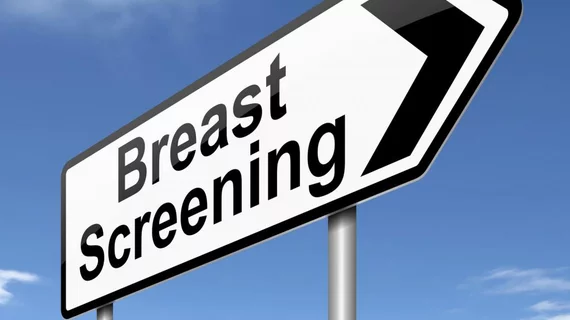DBT, synthetic mammography an accurate pairing that can lower radiation dose
The combination of digital breast tomosynthesis (DBT) and synthetic 2D mammography is as accurate as DBT and full-field digital mammography (FFDM), according to new findings published in the American Journal of Roentgenology. It also exposes the patient to much less radiation.
The researchers noted that one issue with DBT is its radiation dose, which is “nearly double that of FFDM alone.” Using synthetic 2D images with DBT instead of FFDM, however, can cut the dose in half—as long as the combination of DBT and synthetic mammography can provide enough diagnostic accuracy.
The authors compared data from patients who underwent breast cancer screening using DBT, synthetic 2D mammography and FFDM from Aug. 13, 2014, to Jan. 31, 2016. Eighty-nine biopsy-proven breast cancers and 100 negative or benign findings were including in the study. A team of three independent readers interpreted the studies.
Overall, DBT and synthetic 2D mammography had a sensitivity of 0.83, a specificity of 0.96 and a positive predictive value (PPV) of 0.93. DBT and FDM, meanwhile, had a sensitivity of 0.84, a specificity of 0.94 and a PPV 0.95.
“The principal findings were that DBT plus synthetic 2D mammography performs as well as and not worse than DBT plus FFDM in measures of diagnostic accuracy in a U.S. screening population,” wrote author Katherine Simon, MD, department of radiology at Weill Cornell Medicine in New York City, and colleagues. “The results suggest generalizability by validating the promising results of a small number of prior studies, now applied to a typical U.S. urban setting with use of the most up-to-date synthetic 2D mammography software algorithm.”
Simon and colleagues also noted that their study had certain limitations. It was a retrospective study at a single facility, for instance, and recall rates were not available.

